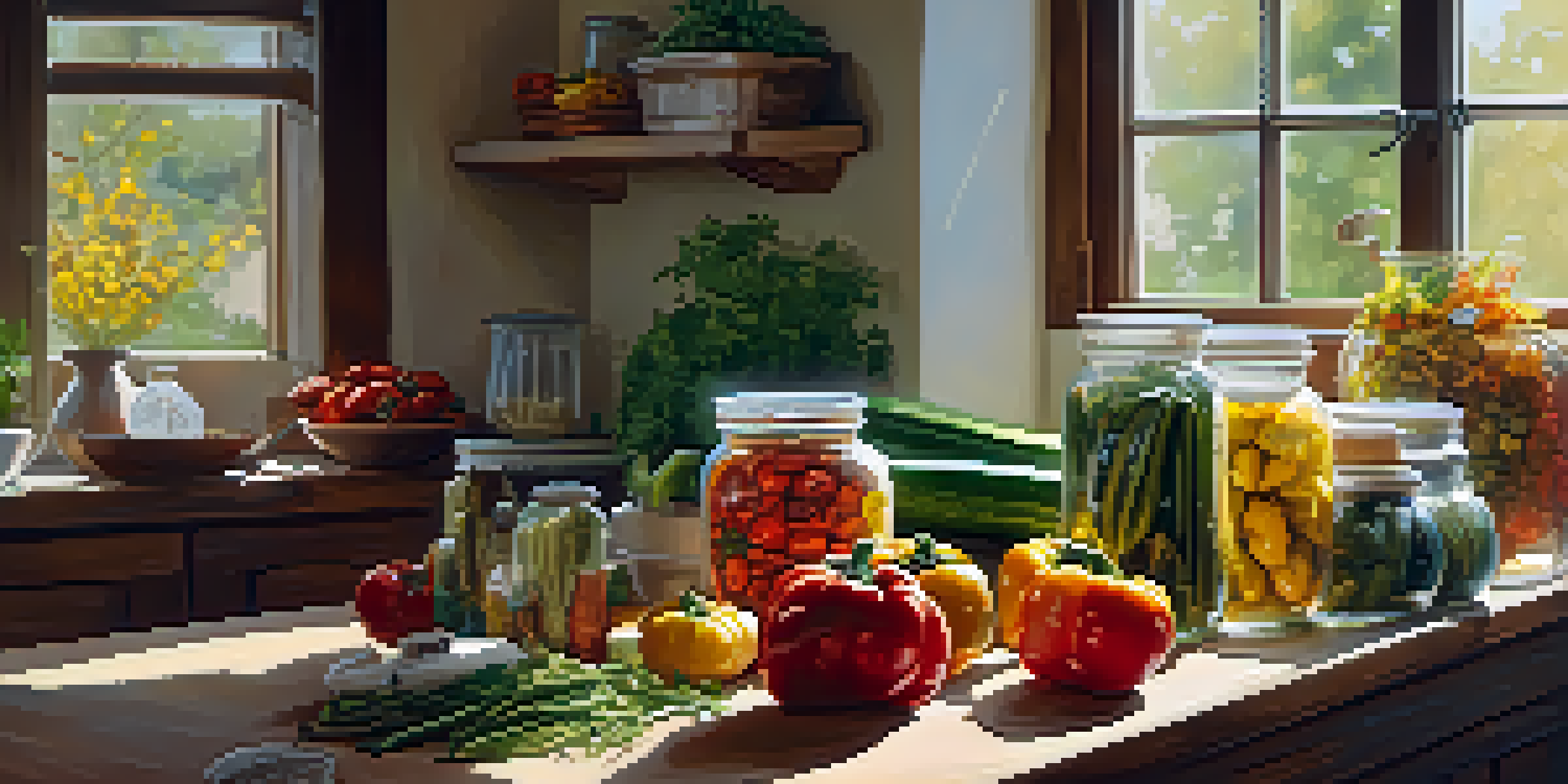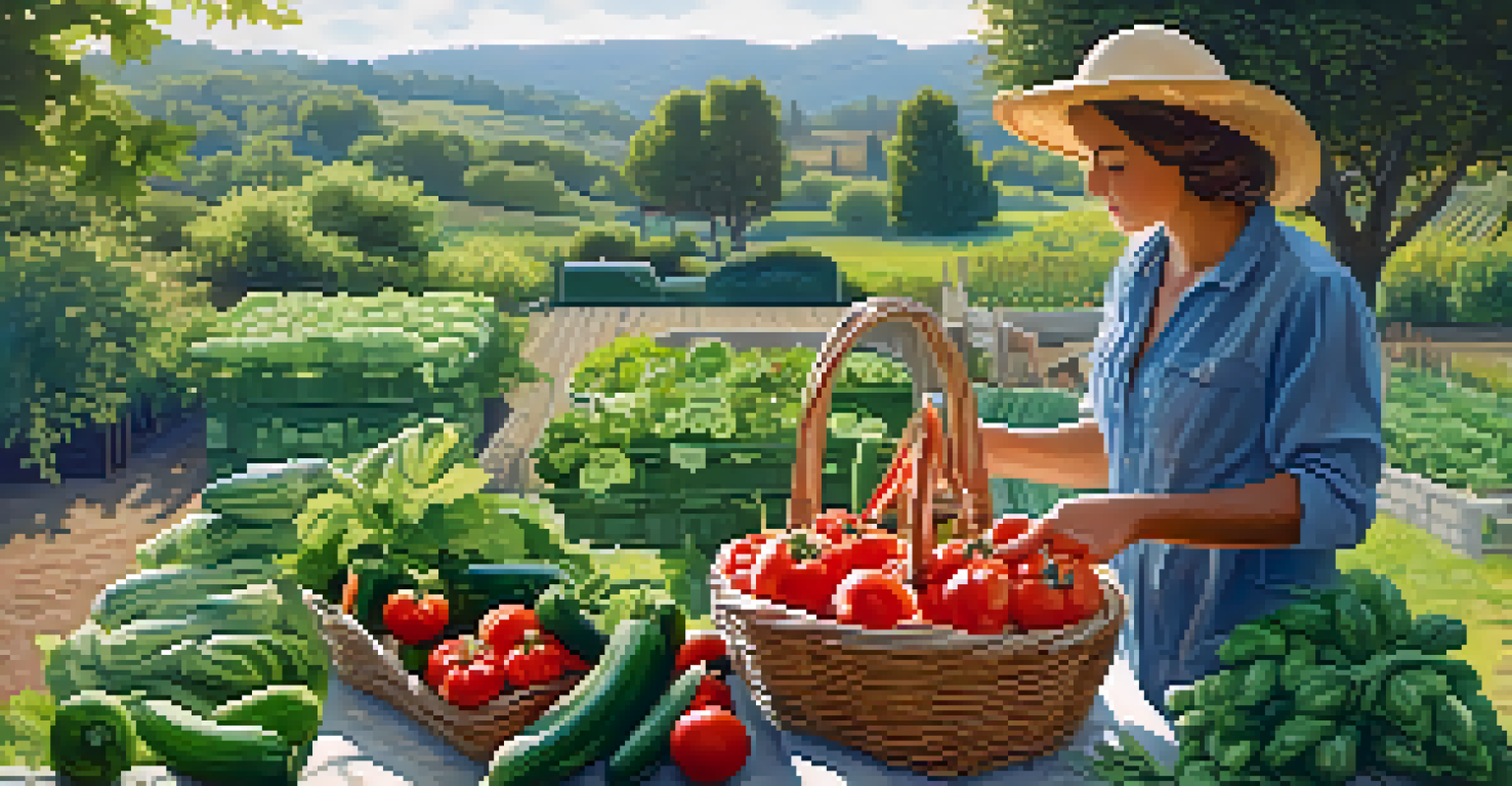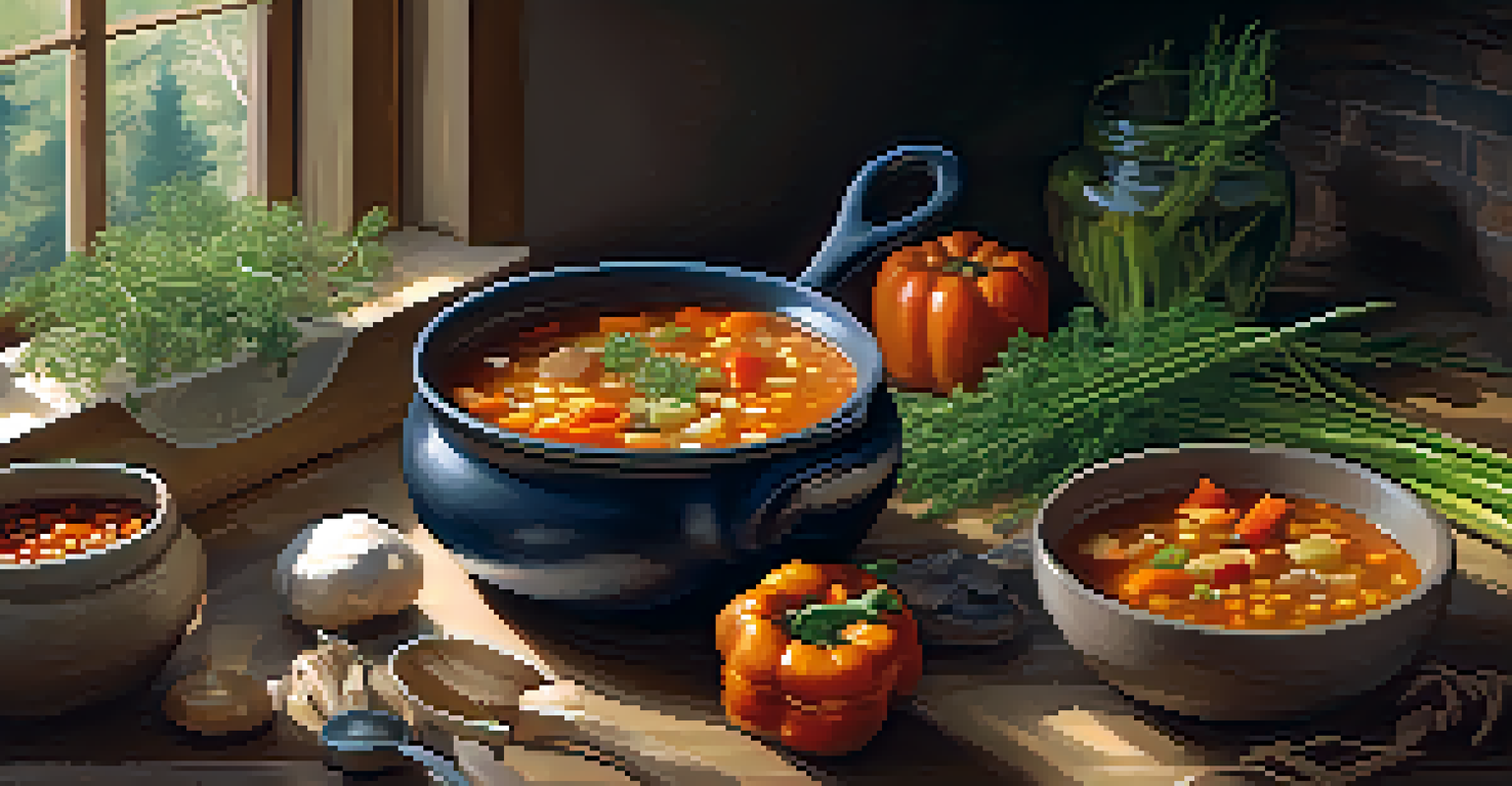The Art of Drying: Preserving Vegetarian Ingredients

Understanding the Benefits of Drying Vegetables
Drying vegetables is a time-honored method of preservation that enhances flavor while extending shelf life. When you remove moisture, you inhibit the growth of bacteria and mold, making dried foods a safer choice. Plus, dried vegetables can be a great way to enjoy seasonal produce year-round.
The preservation of food is one of the most important aspects of human culture.
Not only does drying preserve food, but it also concentrates the flavors. Think of sun-dried tomatoes; they bring a rich, intense taste to dishes that fresh tomatoes often can't match. This makes dried ingredients not just practical, but also a flavorful addition to your culinary toolkit.
Moreover, dried vegetables are lightweight and easy to store, making them perfect for camping trips or emergency food supplies. With just a little planning, you can create a pantry stocked with versatile ingredients ready for any meal.
Essential Tools for Drying Vegetables at Home
To begin your drying journey, you'll need a few essential tools. A dehydrator is often the best choice for consistent results, but you can also use an oven or even air-dry in a well-ventilated area. Each method has its pros and cons, so choose what fits your lifestyle best.

For those new to drying, a dehydrator can take the guesswork out of the process. Many models come with adjustable temperature settings and timers, ensuring your vegetables dry evenly and thoroughly. This means no more guessing if your carrots are done or if your herbs are crispy enough.
Benefits of Drying Vegetables
Drying vegetables enhances flavor and extends shelf life, making them a practical and tasty addition to your pantry.
Don't forget about storage! Airtight containers or vacuum-sealed bags can help maintain the quality of your dried goods. Proper storage is key to ensuring that your hard work pays off with fresh flavors for months to come.
Step-by-Step Guide to Drying Vegetables
The drying process begins with selecting fresh, ripe vegetables. It’s essential to wash them thoroughly to remove any dirt or pesticides. After washing, slice the vegetables into uniform pieces to ensure they dry at the same rate. Think of this as prepping for a big family dinner – uniformity is key for even cooking.
Cooking with dried vegetables is like capturing the essence of the harvest in every meal.
Next, blanching can be a crucial step for certain vegetables. Blanching involves briefly boiling the vegetables and then plunging them into ice water. This process not only preserves color and flavor but also helps maintain nutrients during the drying process. It's like giving your veggies a quick spa treatment!
Once you’ve prepped and decided on your method of drying, monitor the progress. Depending on the vegetable and your drying method, this could take anywhere from a few hours to a full day. Patience is essential, but the rewarding smell of drying vegetables will keep you motivated!
Best Vegetables for Drying and Their Uses
Some vegetables dry better than others, making them prime candidates for your first attempts. Tomatoes, bell peppers, zucchini, and carrots are all excellent choices that retain flavor and texture when dried. Each of these vegetables can add a unique twist to your dishes, from soups to salads.
For example, dried bell peppers can be rehydrated and tossed into pasta dishes, providing a sweet and smoky flavor. Dried zucchini can be blended into flour for gluten-free baking or rehydrated for casseroles. The versatility of dried vegetables means you can get creative in the kitchen!
Essential Tools for Home Drying
Using tools like dehydrators or ovens simplifies the drying process and ensures consistent results.
Don't forget about the herbs! While not vegetables, drying herbs like basil, oregano, and thyme can enhance your dishes significantly. A sprinkle of dried herbs can elevate a simple salad or pasta dish, bringing a taste of summer into your meals year-round.
Storing Your Dried Vegetables Safely
After drying your vegetables, proper storage is crucial to maintain their quality. Store them in a cool, dark place to prevent exposure to light and heat, which can degrade their flavor and nutritional value. Think of it like storing fine wine; the right conditions can make all the difference.
Use moisture-proof containers, such as glass jars or vacuum-sealed bags, to keep your dried vegetables fresh. Label your containers with the date and type of vegetable to keep track of their shelf life. You’ll want to use them within a year for the best flavor and texture.
Regularly check your stored dried vegetables for any signs of moisture or spoilage. If you notice any changes in color or smell, it might be time to toss them. This way, you can ensure that every meal you prepare is delicious and safe.
Creative Recipes Using Dried Vegetables
Once you have your dried vegetables ready, the fun really begins! Incorporating them into your meals can be as simple as adding them to soups or stews. Dried vegetables rehydrate quickly, making them a convenient option for busy weeknight dinners.
Consider making a hearty vegetable soup; just add your dried vegetables to simmering broth, and let them work their magic. You’ll be amazed at how quickly they plump up and add flavor. It’s like having a gourmet meal ready in no time, perfect for those chilly evenings.
Creative Uses for Dried Veggies
Dried vegetables can be easily incorporated into various dishes, from soups to baked goods, offering versatility in cooking.
You can also experiment with homemade veggie chips or incorporate dried vegetables into baked goods. Ever tried zucchini bread with dried zucchini? The possibilities are endless! Embrace your creativity and make dried vegetables a staple in your cooking repertoire.
Sustainability: The Eco-Friendly Choice of Drying
Drying vegetables is not only a fantastic way to preserve your harvest but also an eco-friendly choice. By reducing food waste, you're contributing to a more sustainable food system. Every time you dry and store leftover produce, you're making a small yet impactful difference.
Furthermore, buying seasonal and local vegetables for drying helps support your community and reduces carbon footprints. Imagine filling your pantry with vibrant, locally-sourced ingredients that were once at risk of being tossed away. It’s a win-win for you and the environment.

As you embrace the art of drying, you’ll find it becomes a part of your lifestyle. It encourages mindful eating and a deeper appreciation for the food we often take for granted. In a world where sustainability is increasingly important, drying vegetables is a delicious step in the right direction.